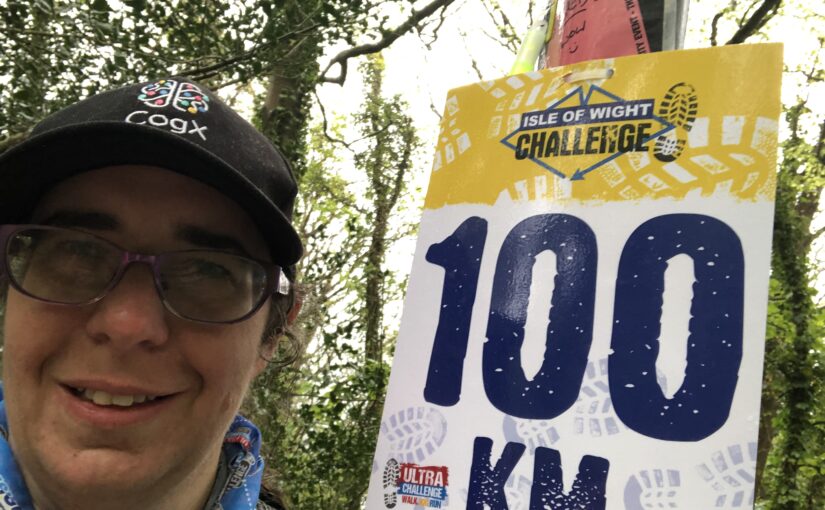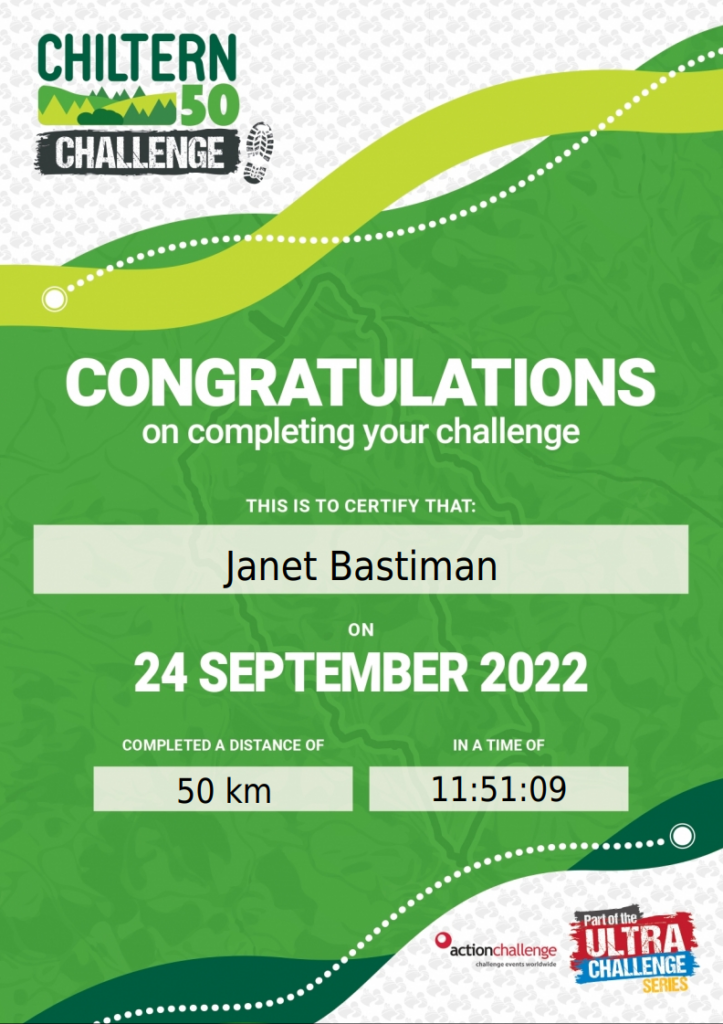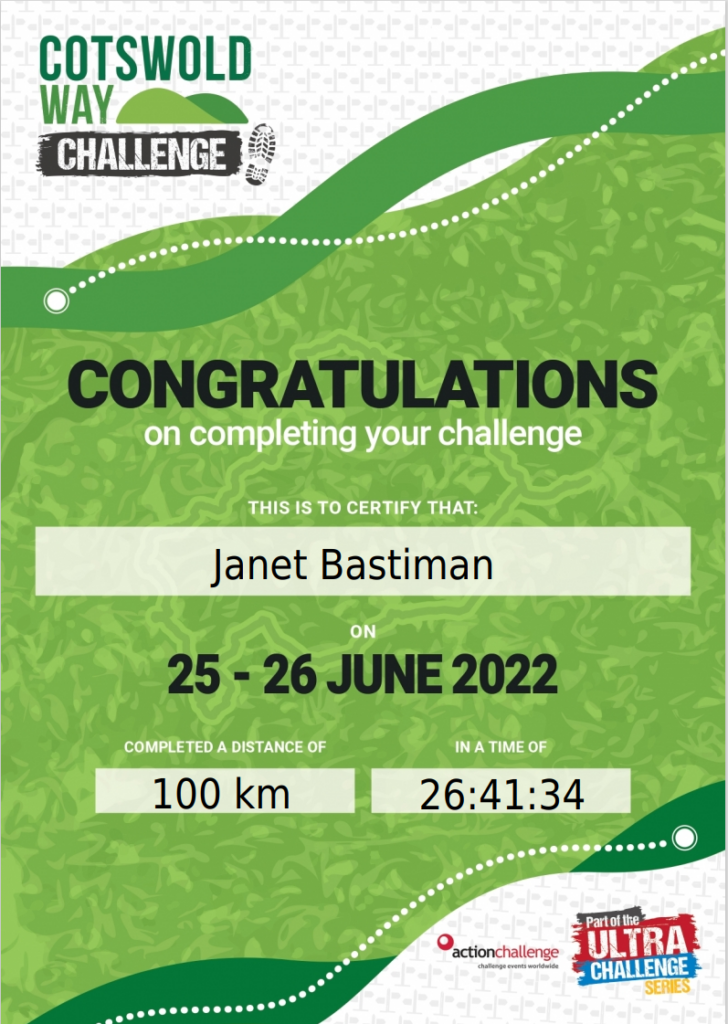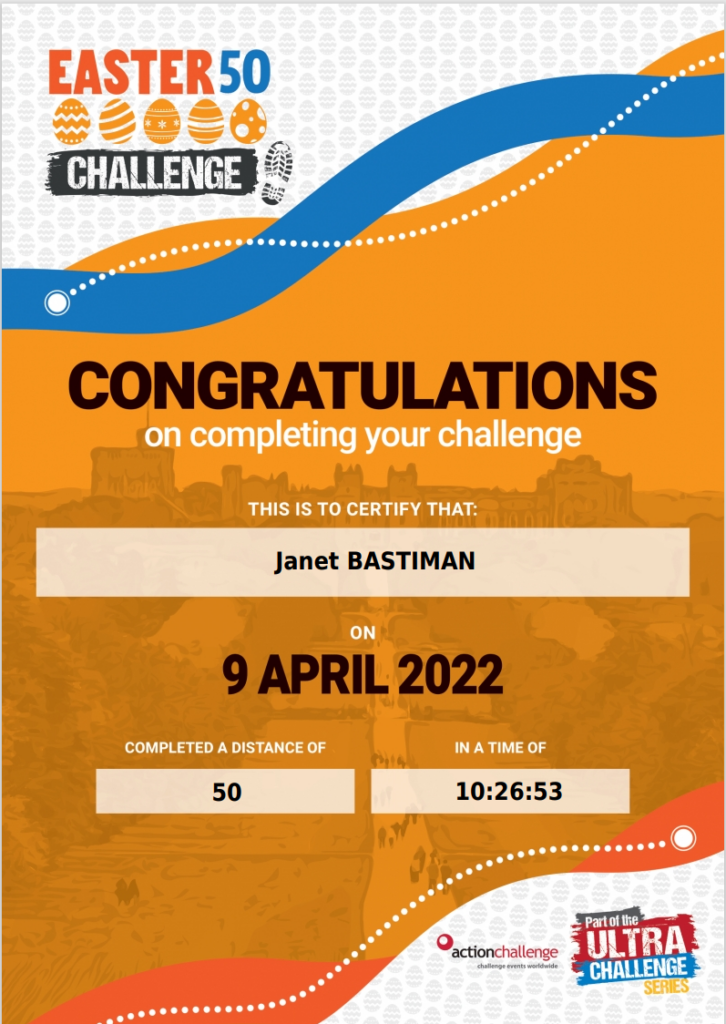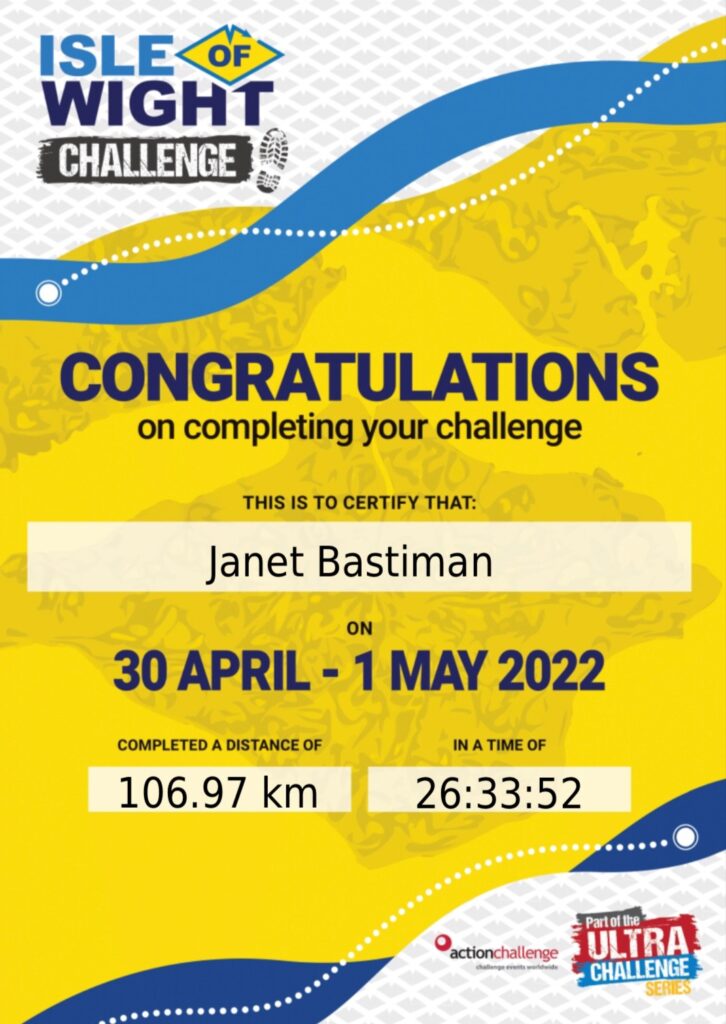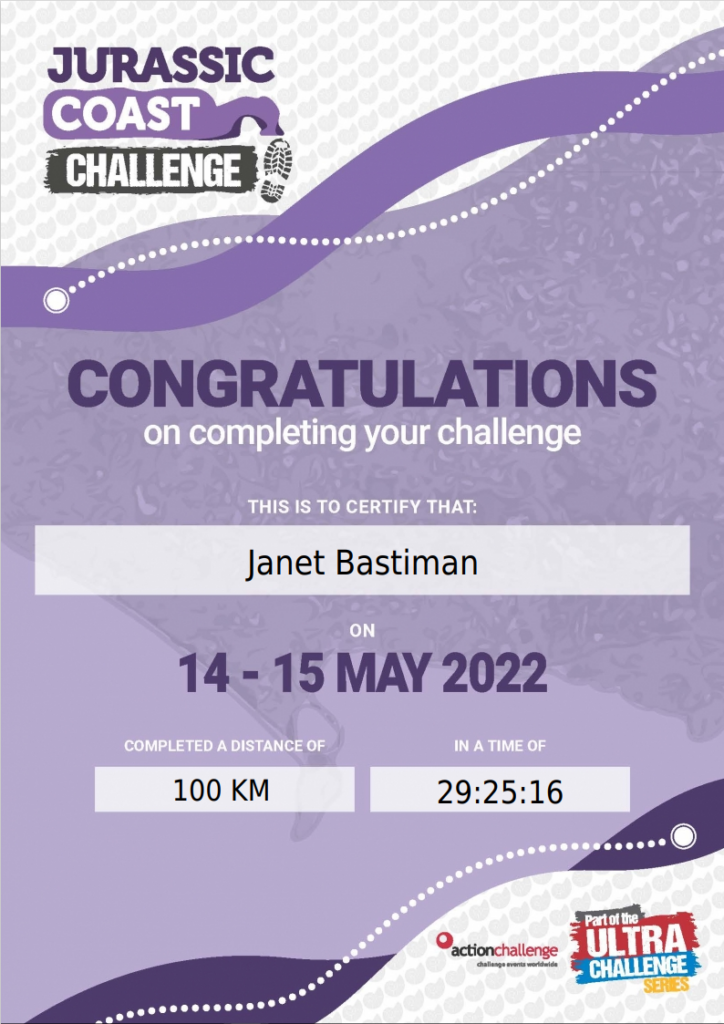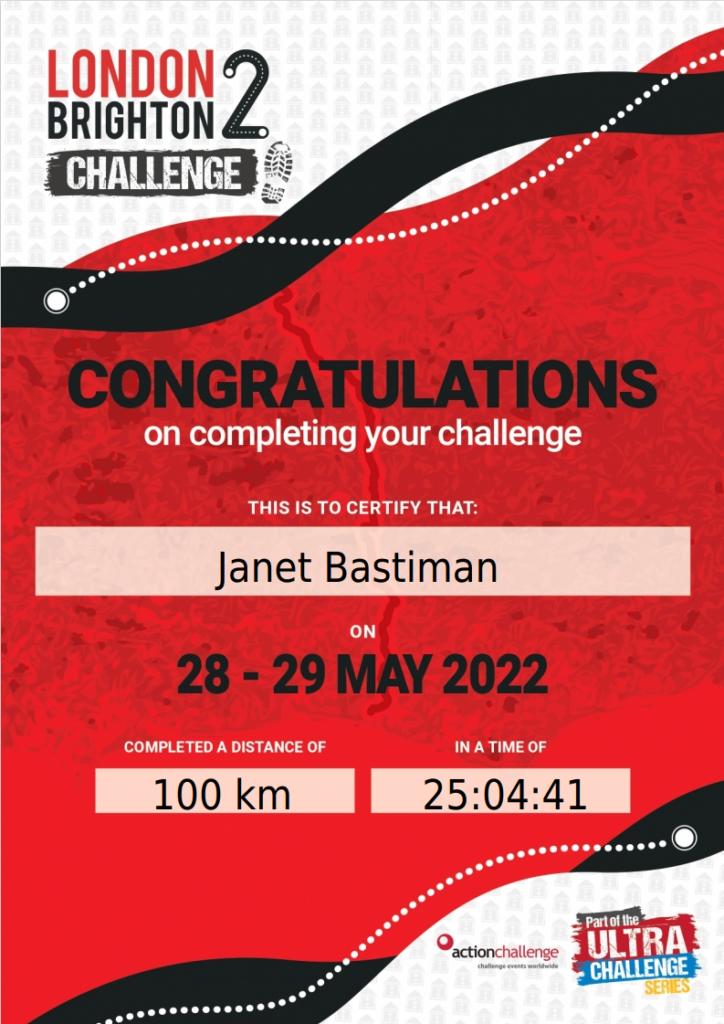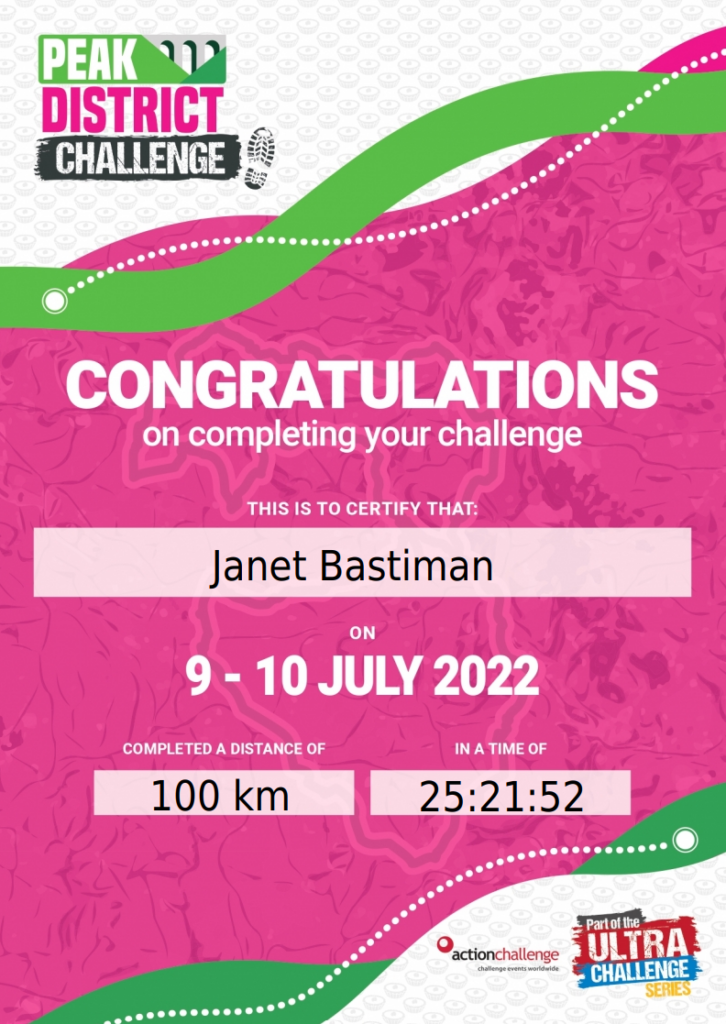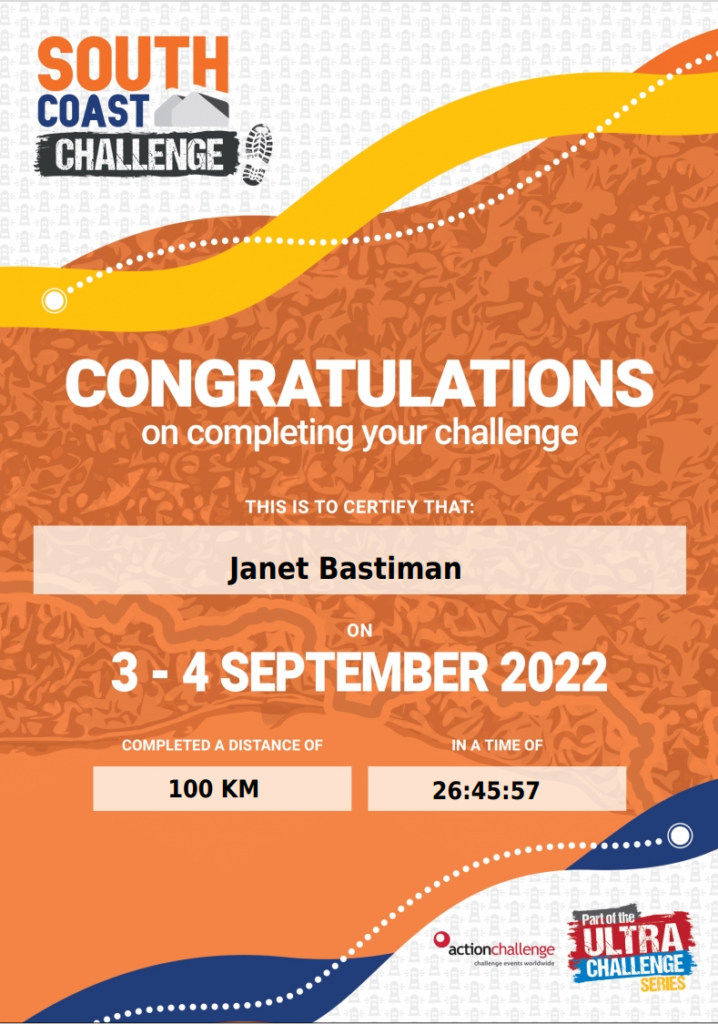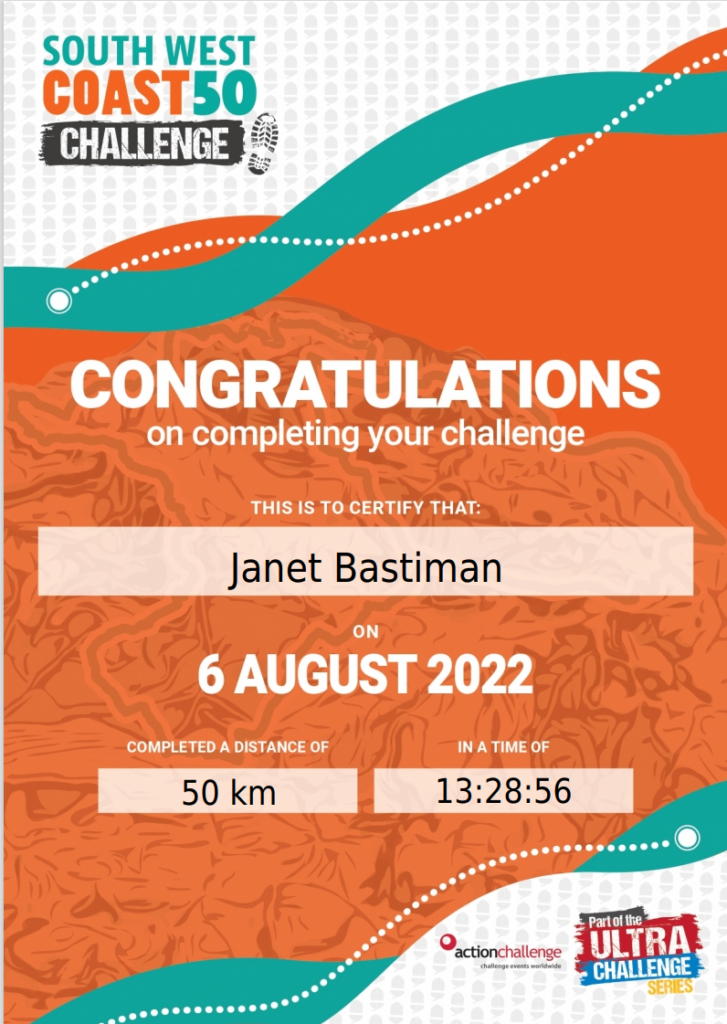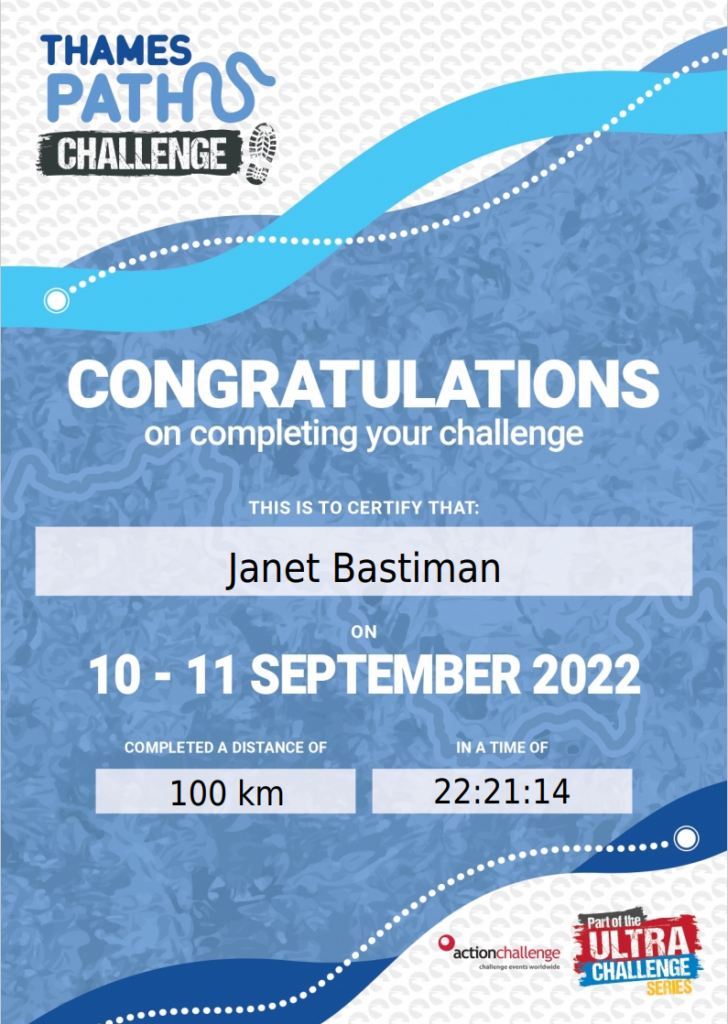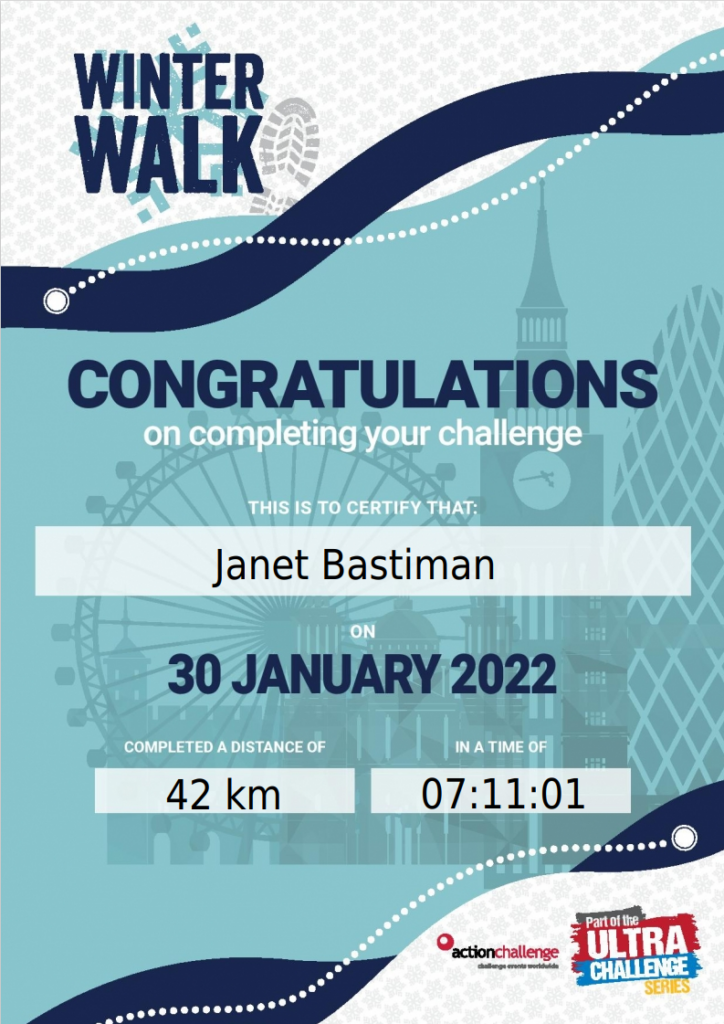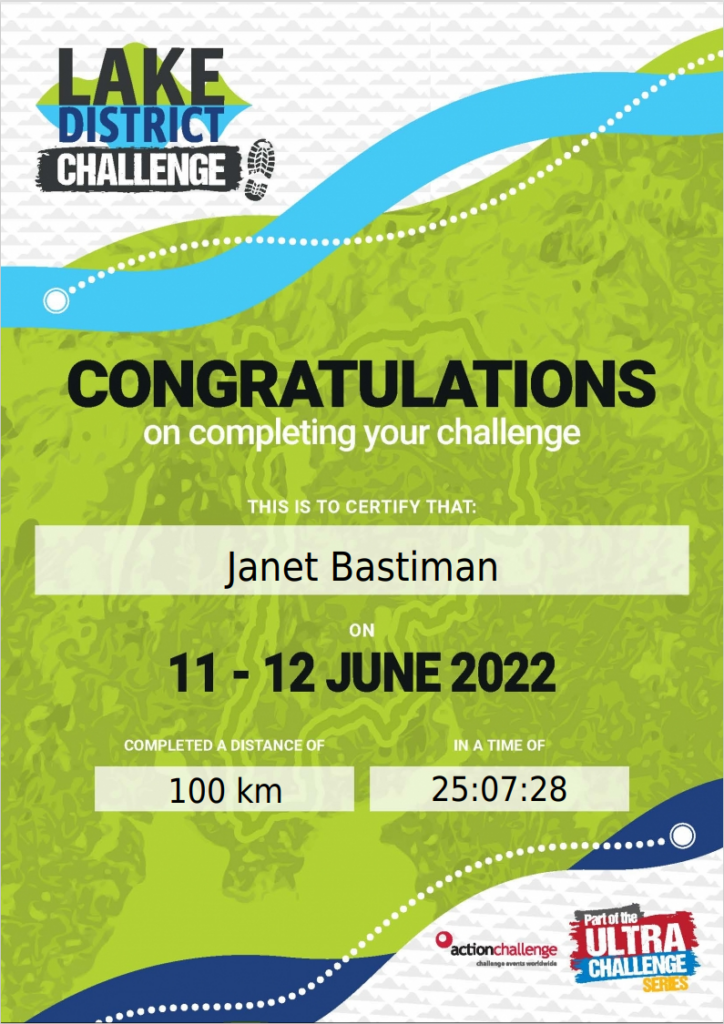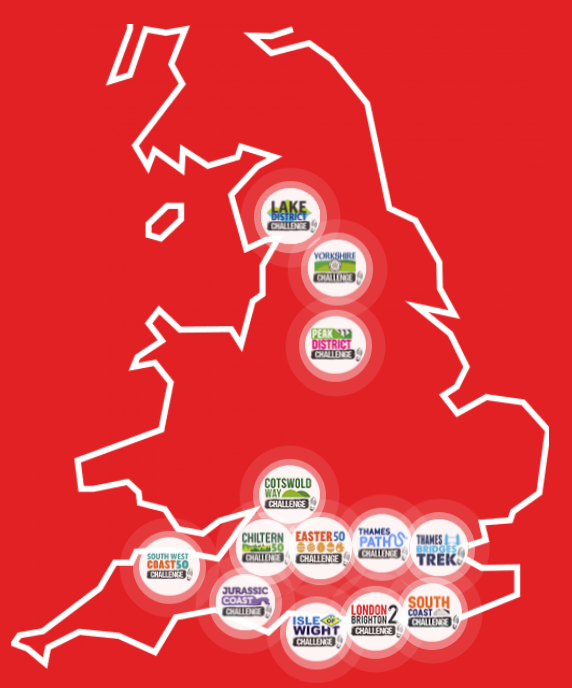
Last year, I walked the Cancer Research Shine Night Walk full Marathon around London and raised just under £1000 in sponsorship for Cancer Research UK. Never one to do less than I’ve done previously, in 2022 I decided that one marathon wasn’t enough and to do justice to raising funds for this amazing charity I needed to up my game. Then I discovered ultra marathons!
I signed up with Action Challenge to do 2 marathons (42km, 26.6 miles), three 50km events (31miles) and nine 100+km walks (62+ miles) for a total of 1140km across the year – all 14 of their “Ultra Series” events. After walking one marathon I was blissfully unaware of the toll this would take on my body as events were sometimes only days apart and working full time from home meant training beyond a few miles from home was nearly impossible. But having done one marathon, I knew I could do another. If I could do a marathon, then I could do 50km. And if I could do 50km then I could do 50km on back-to-back days surely? That is not a training plan I would recommend ;).
Despite all this once I had decided to do it, I just did it, and I kept doing it. Stubbornness and resilience kept me going through rain, through darkness and tiredness. While some of these events were close to home, some were many hours drive away. My weekends became a familiar routine:
- Finish work at 5pm Friday and grab kit I’d packed the night before
- Drive to the start point and camp overnight
- Get only a few hours sleep as most people don’t understand tents aren’t soundproof and complain loudly1
- Down several cups of tea in lieu of breakfast and an 8am start time
- Walk approx 50km with a few rest stops for more tea, fruit and freddos
- Camp again and get another poor night’s sleep
- Another breakfast of tea and freddos on the Sunday as I couldn’t face cereals or sausages
- Walk another 50km
- Medal, T-Shirt, no fizz (due to driving), and glory!
- Then several hours drive home, sometimes stopping for a sleep in a service station
- Home around 2am Monday with an alarm for 7am to be ready for work and the school run!
My poor family got used to me not being around at weekends and also my limping around for a few days afterwards. My daughter found it particularly hilarious after the second 100km when I’d hurt my knee on a downhill section and was struggling with stairs for about a week afterwards.
I learned that I was supposed to have a physio and a chiropodist before planning these walks. I discovered that ibruprofen gel was a thing and no longer will I just put up with aches and pains. I discovered quite how much you can injure your feet and still keep going. Even when I was in pain and alone in the dark, following pink arrows and glowsticks to stay on route, I kept thinking about how this was nothing compared to what the people I was raising money to help were going through.
I discovered that I have an inner strength to keep going when I need to.
I now have 13 out of 14 medals to show the 1099 km I’ve walked so far and in a week’s time I will get off a plane from an AI event in Malaysia and do the final marathon around London with a huge amount of jet lag.
I’m doing this all for a charity that’s very close to my heart: Cancer Research UK – they do amazing work to help ensure better outcomes for everyone affected. I’m asking for a simple donation of 1p per km I will walk this year £11.40, or more if you can. You can donate on my Just Giving page (here) where all of the money will go straight to Cancer Research UK and in addition to the certificates, there are also all of my finisher photos. I’d love to hit my target before I shuffle around the capitol once again.
In some respects, walking an ultra is a lot harder than running as you are going for so much longer – these walks take around 24 hours including stops, which is a long time to keep going at a steady pace, particularly if you’re carrying any injuries. Doing it over two days (mainly because I like to walk in daylight and see the views) adds to the difficulty as your body can cramp up (especially after a poor night’s sleep in a tent!) making it difficult to be up and ready for the 6am start on day 2. There are also the injuries. If you’re still not convinced that I’m worthy of your donation, then I’ve got a selection of my blisters and toe damage on a separate page. This has close ups of what my friends are calling my “gnarly feet”. If you take a look please do donate afterwards. You have been warned – link here.
Thank you for reading this far and please help me support this amazing charity.
- This happened *every* time and starting an event with poor sleep because of dozens of people moaning requires a certain amount of resilience to stay positive! ↩
